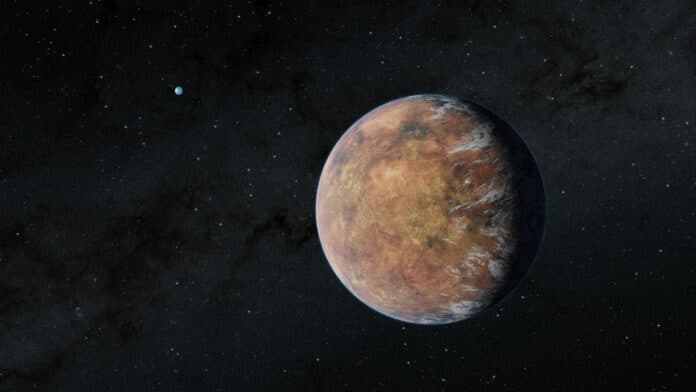Scientists have discovered a planet the size of Earth named TOI 700 e that is circling within its star’s habitable zone. This planet was found using data from NASA’s Transiting Exoplanet Survey Satellite. It is 95% as big as Earth and probably rocky.
Three planets in this system, known as TOI 700 b, c, and d, were previously found by astronomers. The habitable zone is where planet d also revolves. However, it took scientists another year of TESS observations to find TOI 700 e.
TOI 700 is a small, cool M dwarf star located around 100 light-years away in the southern constellation Dorado. The Earth-size, habitable-zone planet d is on a 37-day orbit, along with two other worlds. The innermost planet, TOI 700 b, orbits the star every ten days and is nearly 90% the size of Earth. The orbit of TOI 700 c, which is more than 2.5 times larger than Earth, lasts 16 days.
The planets are likely tidally locked, meaning they rotate once per circle so that one side always faces the star, just as the Moon always faces Earth from one side of its orbit. TOI 700 e, which may also be tidally locked, takes 28 days to orbit its star, placing planet e between planets c and d in the so-called optimistic habitable zone.
Emily Gilbert, a postdoctoral fellow at NASA’s Jet Propulsion Laboratory in Southern California who led the work, said, “This is one of only a few systems with multiple, small, habitable-zone planets that we know of. That makes the TOI 700 system an exciting prospect for additional follow-up. Planet e is about 10% smaller than planet d, so the system also shows how additional TESS observations help us find smaller and smaller worlds.”
Ben Hord, a doctoral candidate at the University of Maryland, College Park, and a graduate researcher at NASA’s Goddard Space Flight Center in Greenbelt, Maryland, said, “If the star was a little closer or the planet a little bigger, we might have been able to spot TOI 700 e in the first year of TESS data. But the signal was so faint that we needed the additional year of transit observations to identify it.”
Gilbert said, “Follow-up study of the TOI 700 system with space- and ground-based observatories is ongoing and may yield further insights into this rare system.”
Allison Youngblood, a research astrophysicist and the TESS deputy project scientist at Goddard, said, “TESS just completed its second year of northern sky observations. We’re looking forward to the other exciting discoveries hidden in the mission’s treasure trove of data.”
Gilbert presented the result on behalf of her team at the 241st meeting of the American Astronomical Society in Seattle. A paper about the newly discovered planet was accepted by The Astrophysical Journal Letters.
